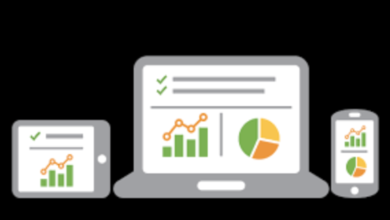Automated Sales Data Analysis: What You Need To Know

Automated Sales Data Analysis employs algorithms to interpret sales information efficiently. It streamlines decision-making by revealing trends and patterns within sales data.
Businesses leverage Automated Sales Data Analysis to transform raw numbers into actionable intelligence. This innovative process aids companies in understanding their performance, customer behavior, and market trends. By utilizing cutting-edge technology and sophisticated software, organizations can effortlessly track their sales metrics, predict future trends, and make data-driven decisions.
The implementation of automatic analysis saves time and resources while boosting accuracy and the ability to react swiftly to changing market dynamics. With real-time analysis capabilities, businesses stay ahead of the curve, optimizing their sales strategies and improving overall profitability. Automated Sales Data Analysis is an indispensable tool in the modern business landscape, where harnessing the power of data is key to success.
Contents
- 1 Embracing Automation In Sales Data
- 2 The Engine Of Modern Sales Strategies
- 3 Tools Of The Trade
- 4 Unlocking Patterns With Big Data
- 5 Tailored Sales Experiences
- 6 Boosting Productivity
- 7 Strategizing With Data Insights
- 8 Overcoming Implementation Challenges
- 9 The Future Of Sales With Ai And Machine Learning
- 10 Case Studies: Success Stories And Lessons Learned
- 11 Building A Data-savvy Sales Culture
- 12 Measuring The Impact
- 13 Conclusion
Embracing Automation In Sales Data
The rise of data-driven sales marks a pivot to smarter business strategies. Sales teams now harness the power of big data to make informed decisions. Automation plays a crucial role in this transition by offering real-time insights and trend predictions. Automating sales data analysis has several benefits. It ensures consistent accuracy in sales forecasts. It reduces the time spent on data crunching. With automation, teams can focus on strategic tasks rather than manual data entry or report generation. This shift leads to better customer relationships and more effective sales campaigns. Automated tools detect patterns and opportunities that might go unnoticed by human analysts. It provides a competitive edge by enabling quick adaptation to market changes. Teams using automation can identify best-selling products faster and adjust strategies accordingly.
The Engine Of Modern Sales Strategies
Automated sales data analysis is changing the game. It turns raw numbers into powerful insights. Today’s businesses need smart strategies to stay ahead. With this technology, we can see patterns and predict future sales. We use big data to know what customers want. Machines learn from sales data very fast. This change is huge for those who sell things. They rely less on guessing and more on data. Better decisions come from clear data, not guesses. Smart software helps find hidden opportunities. It even spots problems before they grow. This is the engine of modern sales strategies.
Tools Of The Trade
Automated sales data analysis is crucial for modern businesses. It optimizes operations and boosts profits. A range of software solutions exist to aid this process. Each platform offers distinct features and benefits. The ability to handle large datasets and generate insightful reports is key. Salesforce remains a popular choice with its robust analytics and customization options. Microsoft Dynamics 365 is prized for its integration with other Microsoft products. Zoho Analytics is another tool that provides comprehensive data analysis with a user-friendly interface.
| Platform | Main Features | User Experience |
|---|---|---|
| Salesforce | Customizable, Scalable | Intuitive |
| Microsoft Dynamics 365 | Great Integration, Versatile | Smooth |
| Zoho Analytics | Comprehensive, Accessible | Straightforward |
- Platform choice depends on your business needs.
- Consider data volume and required insights.
- Opt for a tool that aligns with your goals.
Unlocking Patterns With Big Data
Big Data reveals patterns in sales activities. Using advanced tools, businesses pinpoint what drives sales increases. Trend identification helps in forming an effective sales strategy. By understanding customer behavior, companies tailor their offerings to meet market demands. Predictive analytics takes past sales data and uses it to foretell future trends. It equips businesses with insights for forecasting sales. This drives smarter decisions, reduces risks and can substantially increase profitability.
Tailored Sales Experiences
Automated sales data analysis unlocks new ways to create tailored sales experiences. By personalizing interactions, businesses can directly target consumer needs. To enhance customer engagement, real-time analytics play a pivotal role. Customers receive offers and recommendations that feel unique to them. This is because data-driven strategies inform companies about individual preferences. The impact of personalization is significant. It results in improved customer satisfaction and loyalty. With each transaction, data is captured and analyzed. The insights gained allow for the fine-tuning of marketing efforts. Sales teams can react quickly to customer behavior, tailoring their approach. This agility leads to more effective sales tactics.
Boosting Productivity
Automated sales data analysis tools are game changers. They turn raw data into valuable insights. This boosts productivity by easing workload. Reducing manual tasks allows teams to focus on strategy. Teams work smart, not just hard. By enhancing sales team performance, businesses grow faster. Salespeople use insights to close deals better. They spot trends and act quickly. Time spent on data is now for selling. This shift is key for a competitive edge. Productivity skyrockets with the right tools in place.
Strategizing With Data Insights
Effective use of sales data reshapes strategies for better results. Data-driven decision making stands at the cornerstone of modern success. Businesses harness historical sales metrics to predict future outcomes. By analyzing trends and consumer behavior, companies fine-tune marketing efforts. This proactive approach enables them to address market shifts swiftly. Optimization of sales processes and pipelines is another key benefit. Automated analysis tools help teams to identify bottlenecks. Efficiency gains come from pinpointing areas of improvement. Leaders can then redirect resources to boost productivity. This ensures that the sales cycle is streamlined, leading to increased revenue.
Overcoming Implementation Challenges
Automated sales data analysis can streamline business operations dramatically. Integrating these systems with current infrastructure presents unique challenges. Both hardware compatibility and software connectivity require meticulous planning. For a seamless blend, IT teams must map out data flows and prepare for technical hitches. This ensures new tools work with old ones smoothly.
Teams should start with pilot projects to spot potential problems early. Another hurdle is getting people to use new technology. Organizations often face resistance from staff unaccustomed to new methods. Training programs are essential for a smooth transition. They equip employees with necessary skills and boost their confidence. Ongoing support and clear communication uphold morale, keeping adoption rates high.
| Challenge | Strategy |
|---|---|
| System Integration | Mapping data flows, Piloting projects |
| Adoption | Training, Support, Communication |
The Future Of Sales With Ai And Machine Learning
Artificial Intelligence (AI) and Machine Learning (ML) are changing sales forever. AI tools analyze tons of data quickly. They see patterns that we often miss. Sales teams can use these patterns to sell more. Machine Learning algorithms get smarter over time. They learn what works. This means they can predict future trends. With these predictions, businesses can make better decisions.
| Trend | Impact on Sales |
|---|---|
| Real-time Analysis | Instant data for quick decisions. |
| Customer Insights | Tailored pitches for each buyer. |
| Forecasting | Predict sales, plan inventory. |
Sellers can focus on selling, while AI handles the data. They won’t waste time on spreadsheets or guesswork. This is the power of automation in technology.
Case Studies: Success Stories And Lessons Learned
Automated sales data analysis has revolutionized many companies. Success stories abound, featuring firms that have seen dramatic efficiency gains. Data-driven strategies are now at the heart of their operations. One notable example is a global retail giant that implemented an advanced analytics system. This system processed millions of transactions daily. Real-time insights helped adjust their inventory and sales tactics. Another success case is a small e-commerce company. Automation allowed them to identify best-selling products quickly. They also discovered areas where they were losing money.
With focused data analysis, they could redirect their resources more effectively. These examples show how embracing automation in sales data can steer a company towards greater success. Discussing failures is equally important. A tech startup once struggled with data interpretation. They turned their analytics setbacks into learning opportunities. Insights gained from automated analysis now prevent stock shortages and overordering. Such turnaround tales inspire others to capitalize on automated systems for better decision-making.
Building A Data-savvy Sales Culture
Building a strong sales force often relies on understanding complex data. Teams thrive with members who can make sense of numbers. Educating sales professionals to read and interpret sales figures is key.
- Data literacy is a vital skill for each team member.
- Training modules should be simple and engaging.
- Regular workshops boost confidence and skills.
- Growth follows a deep understanding of sales trends.
Cultivating such skills leads to detailed insights. This creates a competitive edge. Trained employees will spot opportunities from piles of data quickly.
Measuring The Impact
Automated sales data analysis offers significant advantages by tracking various key performance indicators (KPIs). This technology helps businesses understand their sales efforts better. Look closely at metrics like conversion rates, average deal size, and sales cycle length. These insights drive strategic decisions and improve outcomes. Tailored reports spotlight trends and patterns, aiding swift action. Embracing automation in sales data unlocks long-term benefits. Teams become more efficient, saving time and reducing errors. They can focus on selling, not manual data entry. Over time, companies see a consistent uptick in sales performance. The system’s predictive analytics also forecast future trends, enabling proactive planning.
Conclusion
Embracing automated sales data analysis transforms decision-making processes. It unveils trends, drives revenue, and sharpens competitive edges. As business landscapes evolve, such innovation proves indispensable. Don’t let your company lag behind; harness the power of automation and stride confidently into a data-driven future.


